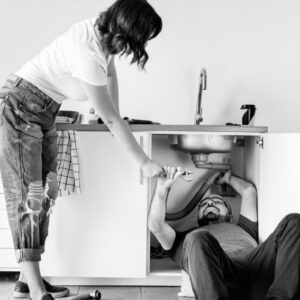There is no harm in trying out your skills and knowledge with different domestic tasks. Instead of hiring an electrician in Inner West, many homeowners prefer trying their DIY skills to get the job done on their own. While DIY skills could be handy to save money in the short run, they might expose you to the bigger dangers at the same time. Among all the house repairs, electrical fixes are by far the most dangerous ones.
According to well-documented numbers, 300 people die annually due to electrical hazards. Even more alarming is the fact that electrocution is ranked at number 6 in terms of causing deaths at workplaces in the United States. If trained and well-equipped professionals have to bear with electric shocks, imagine the vulnerability of a non-professional.
If someone around you goes through an electric shock, your response to the incident could be a deciding factor. Of course, a typical reaction would be to call 911. But by the time the rescue team arrives, you should proceed with the following measures.
-
Detach the victim from the source
The first step is to somehow separate the victim from the source. There are two ways to do so. Either you have to switch off the appliance or pull the victim by force. If you can’t switch off the respective piece of equipment, rush to switch off the main source of your house’s electricity.
Don’t try to pull off the injured party with your bare hands. It would invite further danger. Remember, the human body is an excellent conductor of electricity. You should use non-conducting objects like a wooden broom, rubber doormat, chair and suchlike. However, if your lower body feels the spark of current, you need to stand at a safe distance.
If the accident has occurred in areas such as near the pool or bathroom, you must be more attentive. The reason being, water is an electrical conductor and can easily turn the scenario from bad to worse. In case the victim is gripped by the high voltage lines, contact the local electric company for power off.
-
Do CPR
Oftentimes, when people manage to successfully detach the sufferer from the electric entity, the body shows no signs of circulation. It basically stops performing functions like breathing, coughing or any other type of movement. CPR could be very useful to revive the circulation.
However, you can’t apply the same methods of CPR on both adults and children. Here is how you should practice CPR on children:
- Lay down the child on his back. His or her head must not tilt too far
- Trace the nipple line and put your hand right at the center of the chest
- It’s time to perform the trickiest part of CPR. That is, pressing. Make sure you don’t press more than 2 inches. With a slight distraction, you can cause damage to the ribs. So don’t panic and stay at it.
- Carry on doing 30 compressions unstoppably and then inspect whether the breathing has been restored or not. Try pinching the nose shut. It will ensure complete sealing.
- If the circulation does not begin, continue doing chest compressions until the emergency team lands.
As for adults, the tactics of CPR remain more or less the same. Perhaps you can take a little more liberty when it comes to applying the force. You can’t stop compressions unless an expert takes over the job or, needless to say, the circulation has been normalized.
-
Treating burns
In the majority of the cases, burns are the most common form of injury caused by electric shocks. While some burns could be evident, others might take extra effort before you spot them. Bear in mind, all the burns can’t be approached in the same way.
Depending on the nature of the wound, you have to decide the treatment. Burns are categorized with regard to their severity. In medical terms, they are called first, second and third-degree burns. Here are some DIY tips to cure the burns:
- If the burn belongs to the first two categories, you should cool the burn with water. Ice is strictly forbidden. Keep washing the wounded part for at least 10 to 15 minutes
- Quickly get rid of constricting items including jewelry and clothes that are in contact with burns
- Don’t apply any greasy ointment or stuff like butter. They will only make the matter worse
- Bandages are not recommended, though you can use a non-stick and loose clothing around the burned area
- If the burns have scattered all over the body, avoid covering the body more than 20 percent with water. In the case of children, it is 10 percent.
- The third-degree burns could be extremely painful. The injured person can be given a pain-reliever
- Don’t offer the victim any type of liquid substance to drink
-
Assess the body for internal injuries
At times, the injuries may not be as explicit as the burns but they are equally damaging. Apparently, the victim might seem unhurt but he could well be suffering internally. For example, an electric shock has the potential to affect your nervous system. Weakness, tingling, and extreme pain are some of its prominent signs.
You should also check the victim’s blood circulation. If the blood circulation is not normal, it refers that a lot of tissues have been damaged. It might lead the sufferer to develop blood circulation disorders in the future.
The point being, even when no apparent sign of scar or any wound is found on the body, you should not leave the victim as is. Rather, you should examine the body to the best of your abilities and trace symptoms which may have a future implication on the injured person’s health.
-
Medical follow up
If you have controlled the situation by taking the above steps, you surely deserve a tap on the back. However, the job is still not over. To be on the safe side, you should invite or take the victim to a medical expert.
After careful observation, he will determine a course of action. It could be in the form of a long list of things that the victim might have to prohibit until he fully recovers or it could be some medicines that will speed up the recovery process.
Wrapping up
Many electric shocks prove to be fatal because people don’t know what measures to take in the face of such a mishap. They simply take an emergency rescue service onboard and hope for the best. Well, you can take a much more active approach by subscribing to the above-mentioned tips.




